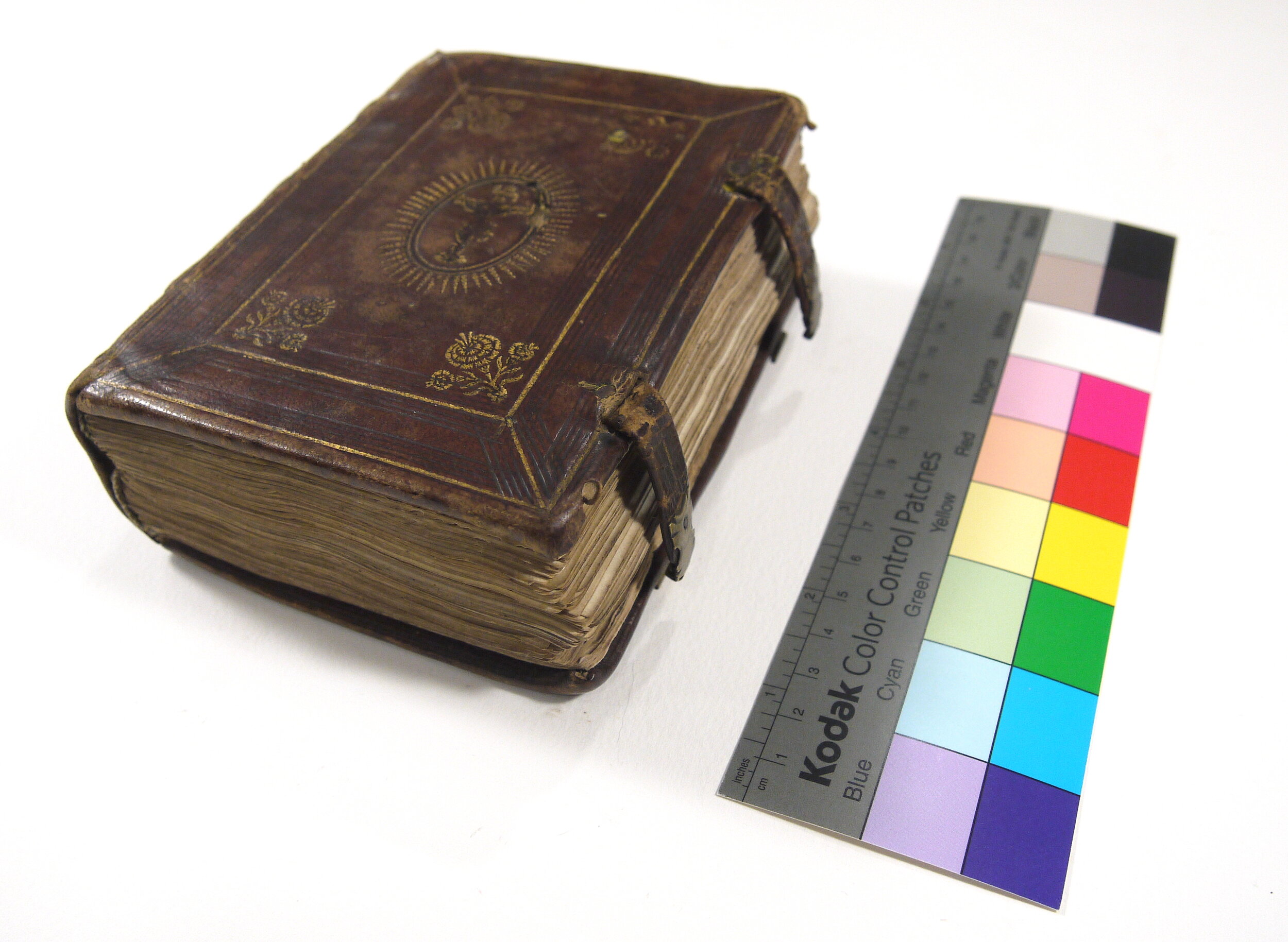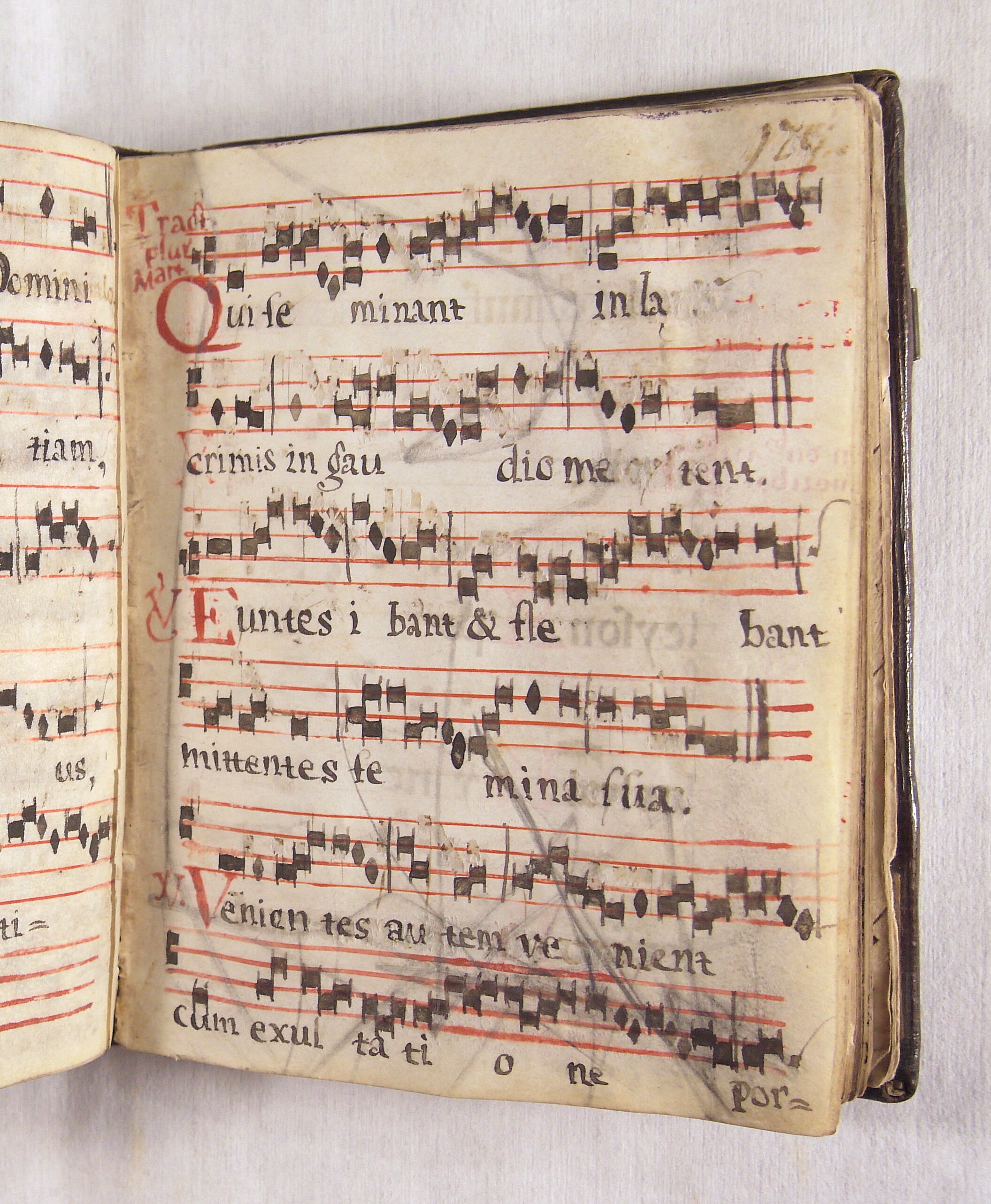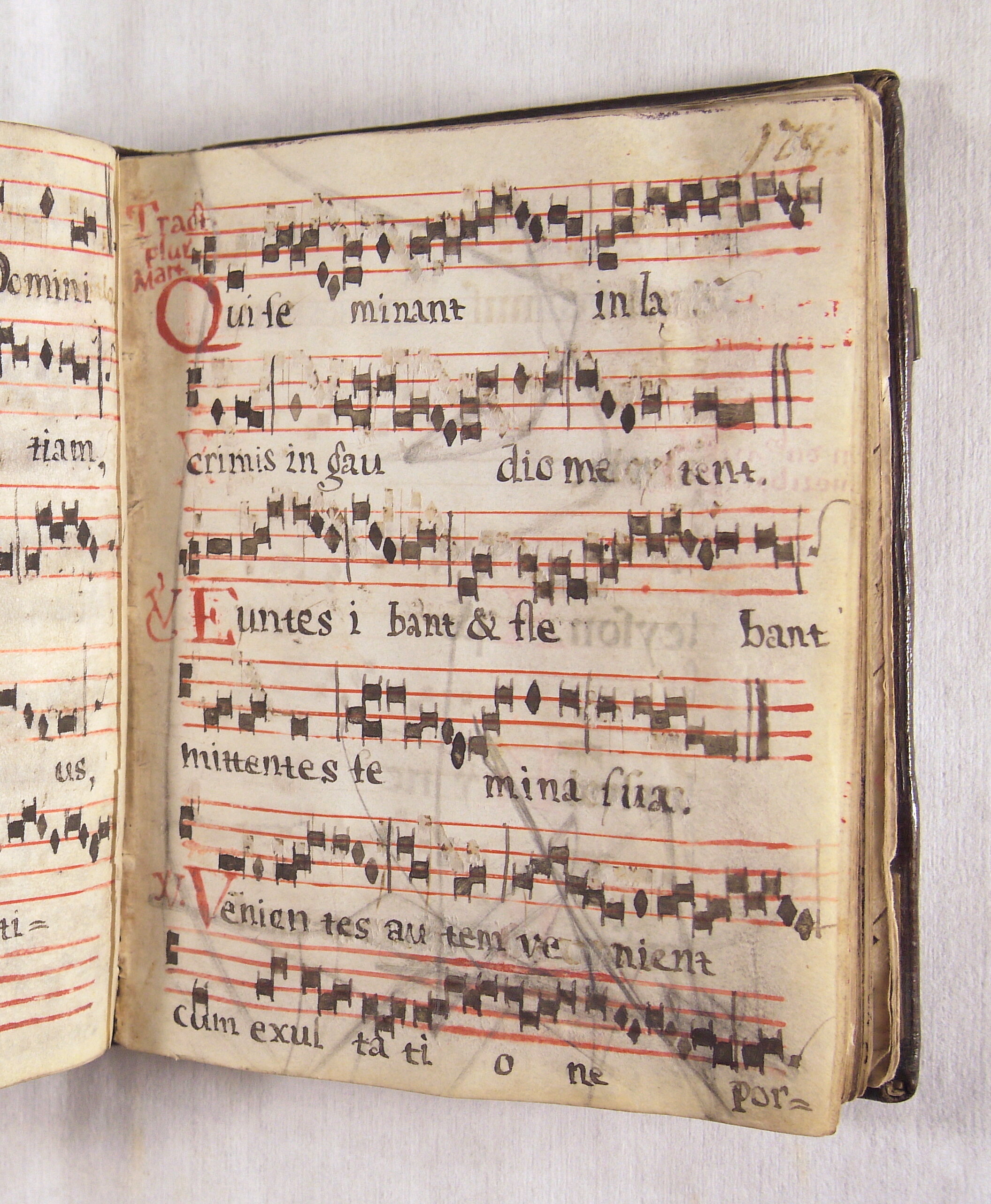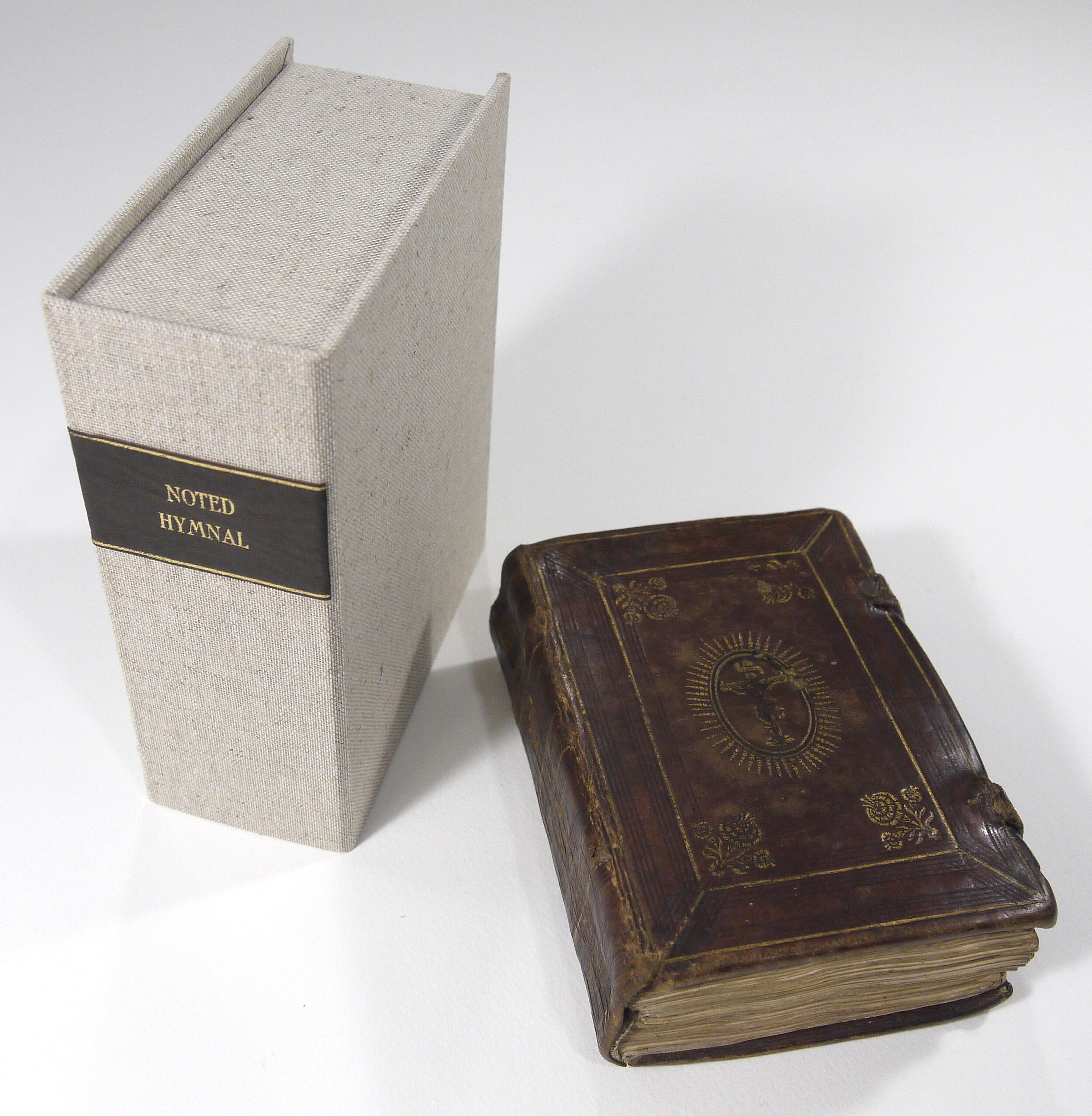The 15th century manuscript hymnal before conservation treatment.
A stunning 15th century manuscript hymnal belonging to Wilfrid Laurier University Archives recently came to Book and Paper Conservation Services for treatment; the goal of the project was to stabilize the binding and flaking pigments in the illuminations so that it could be safely digitized by the Archives. University collections in Ontario hold many beautiful books, and they are often made available to students and researchers for study purposes; even rare volumes like this manuscript may be frequently accessed and therefore subject to material strain. Conservation treatment was a priority for this volume in order for it to be studied safely in the future.
Inside front cover joint loose, before conservation treatment.
The manuscript, which contains noted portions of the Mass for Franciscan use, is dated between 1450-1475, and is in a slightly later binding. The brass clasps and tooled cover design are very appropriate for the age and style of the volume, and there is a lovely illuminated initial on the first page of the book. Inside, the pages are predominantly parchment, but there is an additional section added in the rear of rag paper. The text and notations are executed in iron gall ink and vermillion red pigment, and the illumination is a combination of mineral pigments common to the period, as well as gold leaf.
First leaf showing illuminated initial, after conservation treatment.
There were several condition issues with the volume making it unstable and subject to further damage with each handling. The binding, consisting of leather covered boards and spine, was mainly intact, but attachment to the text block was weak and dependant only on the two sewing cords at front and back joints. There were several pages loose in the middle of the text block, and a careless reader had defaced 2 of the leaves as well as the inside rear paste down with hard, incongruous markings in graphite, resembling a child’s scribble. The text and illuminated initial on the first leaf were actively flaking, damage exacerbated with each opening of the volume and flexing of the pages.
Throughout much of the book, text had been intentionally removed through scraping in order to “edit” the contents, however this was deemed important bibliographical evidence and treatment was not designed to address the damage it had caused to the ink or parchment in these areas.
Detached paper leaf, before conservation.
Defaced parchment leaf, before conservation.
Although the attachment was weak the binding overall was in good condition, and it was decided that a minimal treatment approach to strengthen the object was the best course of action. A hinge reinforcement of strong but flexible Japanese paper was adhered inside both front and rear covers to add strength to the joints, with care taken not to introduce excessive moisture or to disturb the media.
After consultation with Archives staff, the graphite scribbles were deemed not bibliographically significant, and treatment was executed to carefully remove the marks without disturbing the original media.
Finally, the flaking pigment on the illuminated initial page was secured. Working with a small brush under magnification, the stable and reversible conservation adhesive Isinglass was used to consolidate the media.
Minor aesthetic issues were also addressed, such as exposed board corners and light surface soiling to the pages, bringing the object to its best possible state before it was returned to the client.
Consolidation of flaking pigment, during conservation treatment.
Defaced parchment leaf, before treatment.
After treatment, the scribbled mark has been removed.
The code of ethics outlined by the Canadian Association for Conservation of Cultural Property and the Canadian Association of Professional Conservators require conservators to prioritize reversibility of treatment process and transparency of procedure on objects we conserve; this takes the form of thorough photographic documentation of the object before and after treatment, and a written report describing the process and materials used. The documentation informs future curators and conservators of what was done and the rationale behind the treatment decisions, so that, if there is cause, the steps can be reversed at any point in the future.
This constitutes one of the major differences between “restoration” and “conservation”, a subtle but important distinction. While restoration, particularly of rare books, might focus on improving the appearance as well as stability of the volume, and often results in a very attractive object at the end, it is often done at the expense of reversibility. An unfortunate side effect can be the loss of original material important to the bibliographical and material history of the book. Book historians and scholars are increasingly aware that the materials and techniques used in producing a rare book, such as binding structure and types of materials, are invaluable to understanding its context and history. Loss of this evidence by a heavy-handed or highly interventive restoration can render a historic volume much less valuable!
A custom clamshell box was constructed to protect the manuscript after treatment.
The volume fits snugly in the archival clamshell box to prevent damage during transit.
The final step was to construct an archival clamshell box to protect the volume from handling and exposure. The box is made to snugly fit the book, preventing abrasion to the binding during transit and minimizing its exposure to light and dust when not in use. The clamshell box provides an attractive method of storing and identifying the book while keeping it protected.
Book and Paper Conservation Services is pleased to have contributed to the preservation of this fascinating manuscript; it will now be able to be safely digitized and the content accessed by Wilfred Laurier University researchers and students, and with luck will survive another five centuries!
For more information on our rare book conservation services, or to contact our studio for an estimate, please visit the links below.












